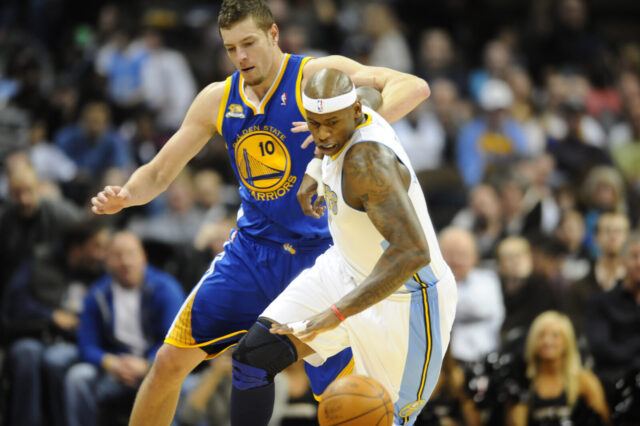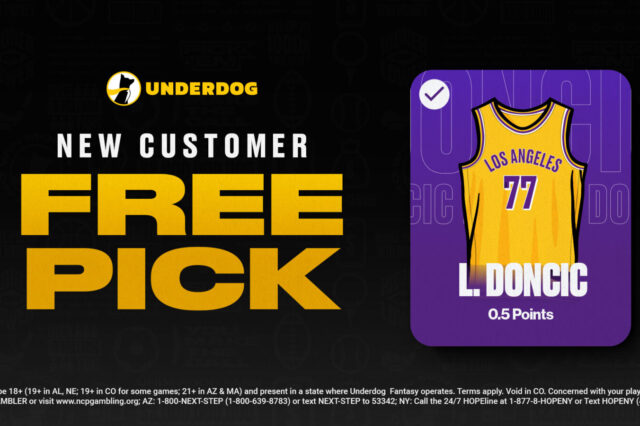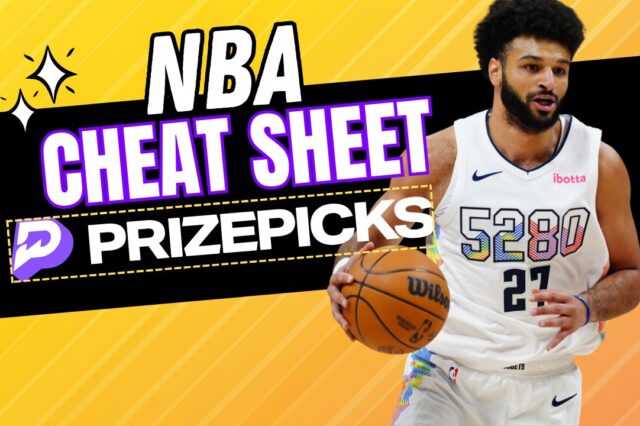The Denver Nuggets were dead in the water, captained by a general manager who initially forgot the rules of the NBA’s Collective Bargaining Agreement.
On October 5th, 2014, Tim Connelly helped orchestrate the extension of power forward Kenneth Faried for five years, $60 million, a major move for the franchise after seeing Andre Iguodala leave in free agency. There was just one problem: the Nuggets weren’t allowed to give Faried a contract of that length and salary. Five year deals were saved for max contract stars, and many around the league were incredulous that the Nuggets would do something like that without making sure it was legal.
That, along with several other tidbits regarding the mess in Denver’s front office, led ESPN’s Kevin Arnowitz to run a flame piece on the Nuggets organization. Titled “How the Denver Nuggets became the NBA’s Biggest Disappointment,” most of the piece provided pot shots at Connelly, an inexperienced shot caller who was hired just 10 days before the 2013 draft after Denver’s entire infrastructure (George Karl, Masai Ujiri, and Pete D’Allesandro) had left or been fired. This quote from a league source provides the biggest question mark of Connelly at the time.
“I’m not sure Tim can do the job,” a league power broker, who has known Connelly for years, said. “He’s the nicest guy you’ll meet, but he’s out of his depths, and you saw it with the [Kenneth] Faried mess.”
Denver’s reputation around the NBA was about as low as possible. Connelly was the scapegoat. It was only a matter of time before Stan and Josh Kroenke would take a stand.
And then, something magical happened.
Making something out of nothing
Fast forward now. It’s January 15th, 2019, and a little over four years after the Faried extension incident, it’s crystal clear that the Nuggets need Connelly and his roster-building prowess just as much as ever.
The story of Connelly’s tenure in Denver has a singular theme: making something out of nothing and maximizing opportunity. When Connelly took over, the Nuggets were in a tenuous position. He decided to keep the nose to the grindstone and trust the foundation of players already established, but to no avail. Signing J.J. Hickson, Nate Robinson, and Darrell Arthur in the 2013 offseason was meant to insulate Denver’s starters already in place, but things quickly spiraled out of control. Connelly and the Nuggets had to pivot quickly or be lost to the hiring/firing cycle soon after.
2014 started a chain of successful moves that have built the Nuggets roster through today, so let’s go through each player chronologically to explain how Connelly built the Nuggets from the ground up:
Gary Harris was acquired in a draft day deal that sent Doug McDermott to the Chicago Bulls, while Harris and Jusuf Nurkic came to Denver.
Nikola Jokic was selected with the 41st pick in the 2014 draft. He may go down as the biggest draft steal in NBA history when it’s all said and done.
Will Barton was acquired in a deal with the Portland Trail Blazers on February 19th, 2015 at the deadline that maximized Arron Afflalo’s waning trade value.
This content is no longer available.
Jamal Murray was selected with the 7th pick in the 2016 draft. He may become Denver’s next max contract player.
Malik Beasley was acquired in the same deal as Will Barton. Not a bad move.
Juancho Hernangomez was acquired in a deal that sent Ty Lawson to the Houston Rockets. Not a bad move either.
Mason Plumlee was acquired in a deal that sent Jusuf Nurkic to Portland, in which Denver needed a quality center to accept a backup role, and Nurkic wasn’t about to do that.
Trey Lyles was acquired in a deal with the Utah Jazz. Not Denver’s best move.
Tyler Lydon was selected 24th overall after the Nuggets moved down in the 2017 draft.
Monte Morris was selected 51st overall in the 2017 draft with a pick acquired in the deal for Jusuf Nurkic, which makes the deal more fun for Denver.
This content is no longer available.
Paul Millsap was signed to a three year, $90 million contract in 2017 free agency with a team option in the third season, Denver’s most important free agency acquisition in over a decade.
Torrey Craig was signed to a two-way contract in 2017 free agency and later upgraded to a permanent deal for his solid defensive play.
Michael Porter Jr. was selected 14th overall in the 2018 draft. If he ever plays, he will likely be regarded as a steal.
Jarred Vanderbilt was selected 41st overall in the 2018 draft. If he ever plays, ditto. Extremely talented player.
Thomas Welsh was selected 58th overall in the 2018 draft. If the 58th pick turns into a rotation player, Connelly can just have a lifetime contract honestly.
Isaiah Thomas was signed to a minimum contract in 2018 free agency. Thus far, he has proved a useful influence from the bench while he recovers his health after hip surgery.
Brandon Goodwin was signed to a two-way contract and has shown explosiveness and athleticism in his limited opportunities.
Hindsight and Reevaluation
On this day, January 13th 2019, the Nuggets will face the Golden State Warriors in a battle for first place in the Western Conference. If I had told you before the season that the Nuggets would miss 63 combined games from three of their starters and still be in this position, you may have asked me if I hit my head recently.
The Warriors have missed 25 combined games from Stephen Curry and Draymond Green, and one might believe the sky was falling hearing about that on ESPN. Meanwhile the Nuggets have quietly gone about their business, save for a few moments here and here, and used their depth at every position to mask those losses. Morris, Beasley, Hernangomez, Craig, and Plumlee have been massive in this regard, and each player has stepped up at varying moments to help Denver stay afloat.
Imagine how different the Nuggets would be if any of the moves they had tried to make on June 22nd 2017 had worked. From acquiring Eric Bledsoe to become a starter over Murray, to moving Murray altogether to acquire Jimmy Butler, to moving Harris for Kevin Love, any of these moves could have disrupted Denver’s current path to the top of the standings. Would Bledsoe be as valuable in the two-man game as Murray in clutch situations? Doubtful. Would Butler start a fire in Denver’s locker room? His track record now says so. Would Kevin Love provide the same culture changing impact that Paul Millsap provided upon arrival? Unlikely.
Sometimes, it’s the move a general manager does NOT make that prove his salt as a leader and decision maker. After missing the playoffs for multiple years, it would have been easy to take the short term solution. Even I called for short term solutions early last season when things looked bleak. Think back to the Golden State Warriors in 2014, when the roster was just getting things going with Stephen Curry, Klay Thompson, Harrison Barnes, and Draymond Green. At one point, the Warriors considered trading Thompson to acquire Kevin Love, so maybe Denver’s progression is very similar to Golden State’s after all. Despite internal and external pressure to be good, Connelly did the right thing and trusted the players he wanted. It takes a special person to make those kinds of moves.
Some of Connelly’s “worst” moves also fall under the qualifier of “wait and see before evaluating.” The trade of Jusuf Nurkic was considered a poor one initially, amplified by Denver paying Mason Plumlee more than what many believed him to be worth. Fast forward to today, and Plumlee’s value to Denver is exceedingly high, given Denver’s injury issues and his defensive versatility. Did Denver give up on Emmanuel Mudiay too soon? Maybe, but having Monte Morris in the pipeline has been a gift for Michael Malone’s rotation this year. Oh, and when did Connelly acquire Morris? During that 2017 draft that seemed to be entirely doom and gloom at the time. Hindsight changes perspective.
Going forward
While things certainly got off to a bumpy start, Tim Connelly has proven to be the level-headed decision maker the Nuggets needed to return from the abyss. Pot shots and initial misses never derailed Connelly, whose ability to acquire and maintain a roster with talent and depth over the long haul have positioned the Nuggets in first place in the Western Conference this year.
Connelly has proven to be the person best equipped to help the Nuggets move forward, and there’s no reason to deviate from that plan if the Nuggets can help it. With his contract expiring after this season, Connelly will be a hot commodity in the offseason for franchises looking for a decision maker of their own.
The Nuggets should know better than any team in the NBA what it means to lose a primary decision maker to another team willing to pay more. Masai Ujiri left the Nuggets high and dry for the Toronto Raptors after the 2013 playoffs, and his exit was one of the many factors that caused the Nuggets to spiral out of control. Connelly is here because of Ujiri’s exit. Hopefully, behind closed doors, the organization is working with Connelly to keep him around for a long time. His ability to add quality talent to Denver’s roster and make the necessary moves to move forward have earned him the opportunity for another contract in the Mile High City.
There are still moves for the Nuggets to make, maybe even during this season. But before any of those are made, Denver should at least have a handshake agreement with Connelly to return beyond this season, hopefully for many years beyond that. Committing to Connelly’s vision and current connections with the organization has clearly become Denver’s best opportunity to win a ring. He brought Denver Jokic, Murray, Harris, Millsap, Barton, and every other player currently on Denver’s roster. Not bad in just five years.
This is Michael Malone’s team, but it’s also Tim Connelly’s team, and the pair deserve at least the next couple of years together to make good on an opportunity to bring a championship to the city of Denver for the first time.


